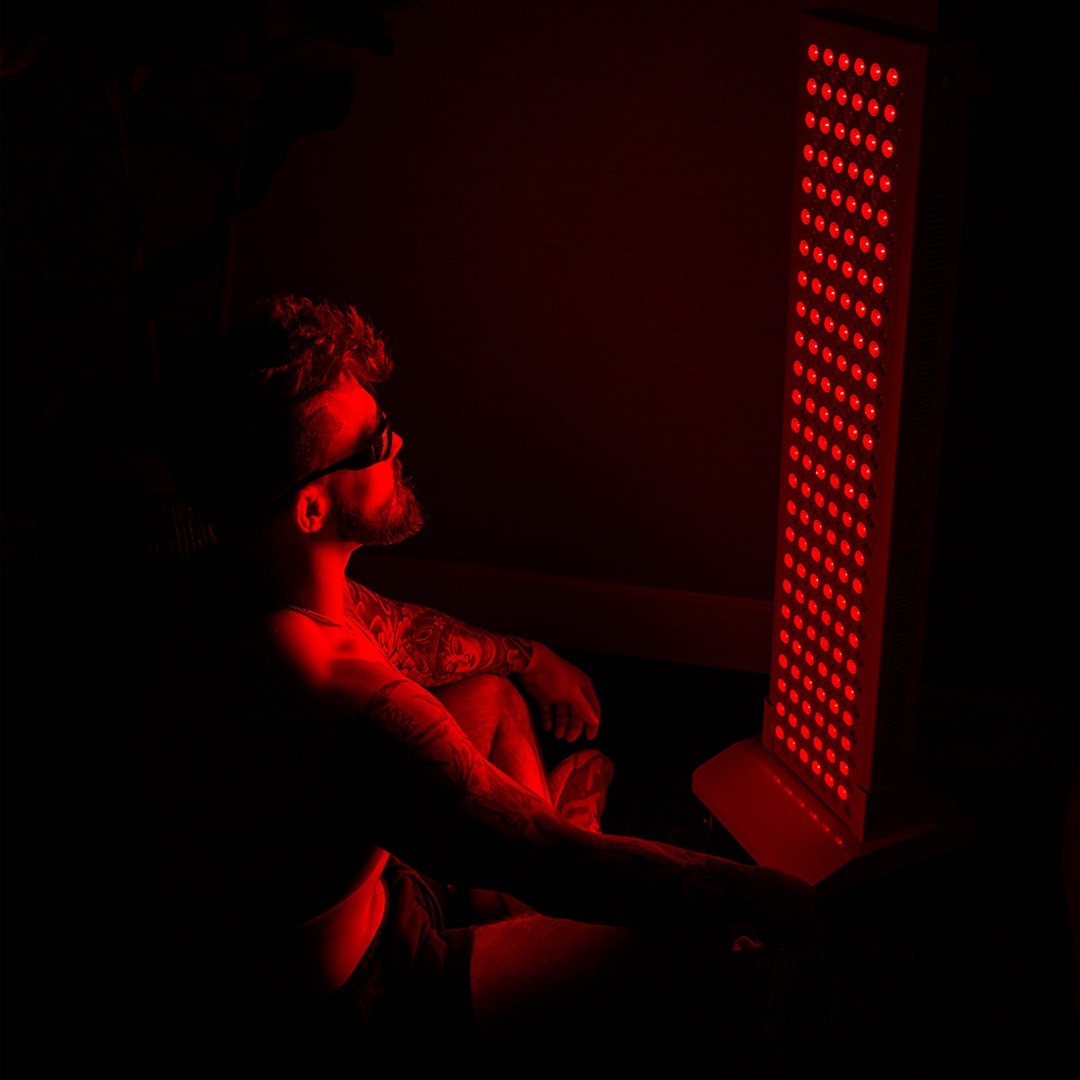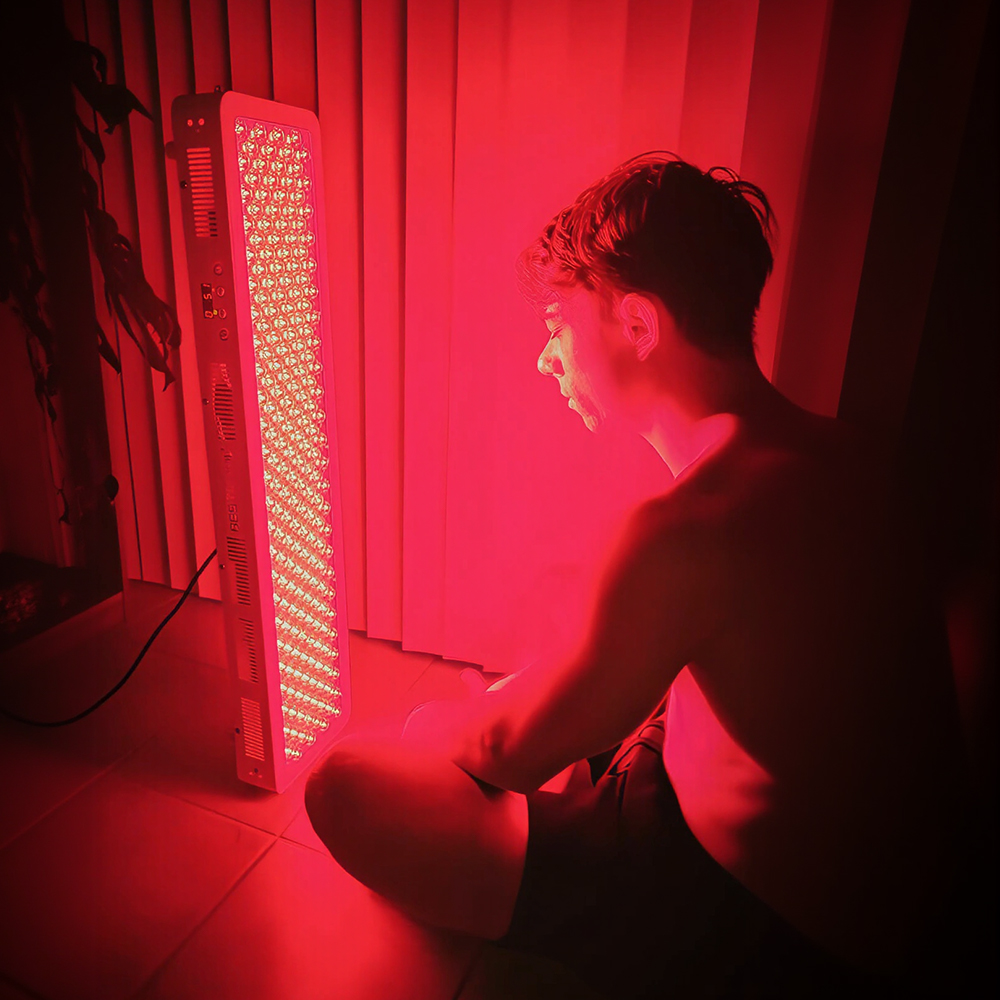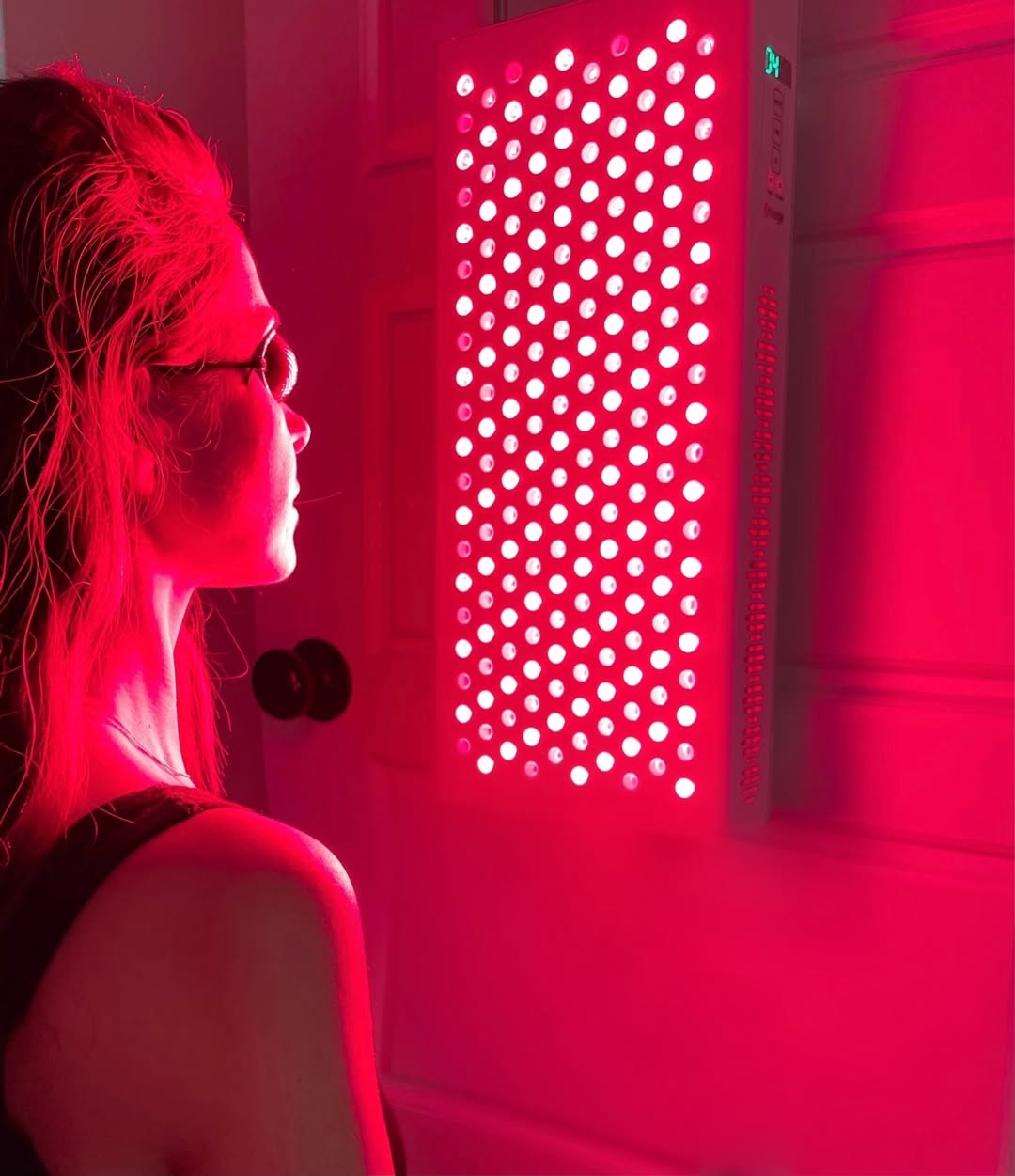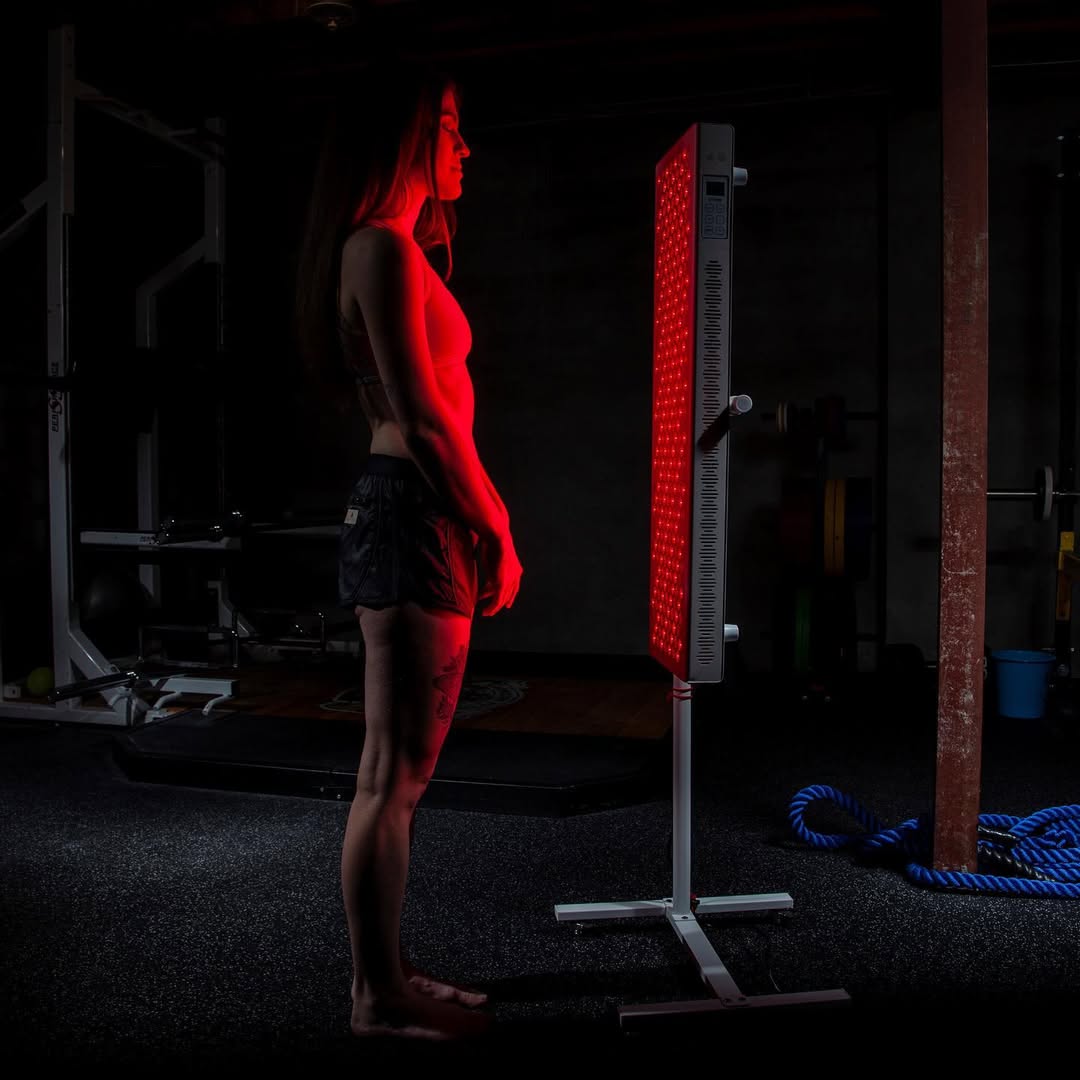![]() Free Shipping
Free Shipping ![]() Buy Now, Pay Later
Buy Now, Pay Later ![]() Eligible
Eligible
What Are the Benefits of Red Light Therapy for Uterine Fibroids?

Uterine fibroids are a common health concern affecting millions of women worldwide. These non-cancerous growths can cause heavy menstrual bleeding, pelvic pain, bloating, and even fertility issues. While traditional treatments include medications, hormonal therapy, or surgery, many women are now turning to alternative therapies—such as red light therapy (RLT)—to manage symptoms and promote healing.
But does red light therapy really help with uterine fibroids? Let’s explore the science, benefits, and real-world applications of this innovative treatment.
Understanding Uterine Fibroids: Causes and Symptoms
Before diving into red light therapy, it’s essential to understand what uterine fibroids are and why they develop.
What Are Uterine Fibroids?
Fibroids are benign tumors that grow in or around the uterus. They vary in size—some are as small as a pea, while others can grow as large as a melon. Their exact cause remains unclear, but factors like hormonal imbalances (estrogen dominance), genetics, and inflammation play a role.
Common Symptoms Include:
- Heavy or prolonged menstrual bleeding
- Severe cramps and pelvic pain
- Frequent urination (due to pressure on the bladder)
- Bloating and a swollen abdomen
- Pain during intercourse
- Infertility or pregnancy complications
Given these challenges, many women seek non-invasive treatments to shrink fibroids and alleviate symptoms—leading to growing interest in red light therapy.
What Is Red Light Therapy?
Red light therapy (RLT), also known as low-level laser therapy (LLLT) or photobiomodulation, is a non-invasive treatment that uses specific wavelengths of red and near-infrared light to stimulate cellular repair and reduce inflammation.
How Does It Work?
- Penetrates skin and tissues: Red and near-infrared light (630nm–850nm) can reach deep into the body, targeting muscles, nerves, and even organs like the uterus.
- Boosts cellular energy (ATP production): Light energy enhances mitochondrial function, helping cells repair and regenerate faster.
- Reduces inflammation: It lowers pro-inflammatory cytokines, which may help shrink fibroids.
- Improves blood circulation: Better blood flow can help deliver oxygen and nutrients to affected areas, aiding healing.
Given these mechanisms, researchers believe RLT could be beneficial for fibroid-related pain and growth.
VELLGUS Elite V2
THE #1 RATED RED LIGHT DEVICE
VELLGUS pro V2
THE #1 RATED FULL BODY RED LIGHT DEVICE
Potential Benefits of Red Light Therapy for Uterine Fibroids
While research on RLT specifically for fibroids is still emerging, studies on similar conditions (endometriosis, pelvic pain, and tissue repair) suggest promising benefits.
1. May Help Shrink Fibroids
- A 2018 study in Lasers in Medical Science found that photobiomodulation reduced tumor size in animal models by improving cellular metabolism.
- Since fibroids are hormone-dependent, RLT’s ability to balance inflammation and oxidative stress may slow their growth.
2. Reduces Pain and Inflammation
- Fibroids often cause severe pelvic pain due to pressure and inflammation.
- RLT has been shown in multiple studies to decrease pain in chronic conditions by lowering inflammatory markers (like TNF-α and IL-6).
3. Improves Menstrual Symptoms
- Heavy bleeding and cramps are major fibroid complaints.
- RLT enhances circulation and may help regulate menstrual flow by supporting healthier uterine tissue.
4. Non-Invasive and Safe
Unlike surgery (hysterectomy or myomectomy) or hormonal drugs (which can have side effects), RLT is drug-free, painless, and has minimal risks.
5. Supports Fertility and Reproductive Health
- Some women with fibroids struggle with infertility due to uterine distortion.
- By reducing fibroid size and improving blood flow, RLT may enhance fertility and support a healthier uterine environment.
How to Use Red Light Therapy for Fibroids
If you’re considering RLT for fibroids, here’s how to incorporate it safely:
1. At-Home Devices
- Red light panels or belts: Apply over the lower abdomen for 10–20 minutes daily.
- Handheld devices: Focus on areas where fibroids cause discomfort.
2. Clinical Treatments
- Some wellness clinics offer professional RLT sessions with stronger, deeper-penetrating devices.
3. Combination Therapy
For best results, pair RLT with:
- Anti-inflammatory diet (reduce sugar, processed foods)
- Herbal supplements (turmeric, green tea)
- Stress management (yoga, acupuncture)
What Does the Research Say?
While more human studies are needed, existing evidence is encouraging:
- A 2020 study in Photomedicine and Laser Surgery found that RLT reduced pain in women with endometriosis, a condition with similar inflammatory pathways to fibroids.
- Research in PLOS ONE (2017) showed that near-infrared light reduced fibrosis (scar tissue), suggesting potential for shrinking fibroids.
Final Thoughts: Is Red Light Therapy Worth Trying?
Red light therapy won’t eliminate fibroids overnight, but it may offer natural pain relief, reduced inflammation, and slower fibroid growth—especially when combined with lifestyle changes.
If you’re struggling with fibroids and want a non-surgical, drug-free option, RLT could be a valuable addition to your wellness routine. Always consult your doctor before starting any new treatment.
Have you tried red light therapy for fibroids? Share your experience in the comments!
References:
- Avci, P., et al. (2013). “Low-Level Laser Therapy for Fat Layer Reduction.” Lasers in Surgery and Medicine.
- Hamblin, M. R. (2017). “Mechanisms and Mitochondrial Redox Signaling in Photobiomodulation.” Photochemistry and Photobiology.
- Jiang, Y., et al. (2020). “Efficacy of Photobiomodulation on Pelvic Pain in Endometriosis.” Photomedicine and Laser Surgery.








